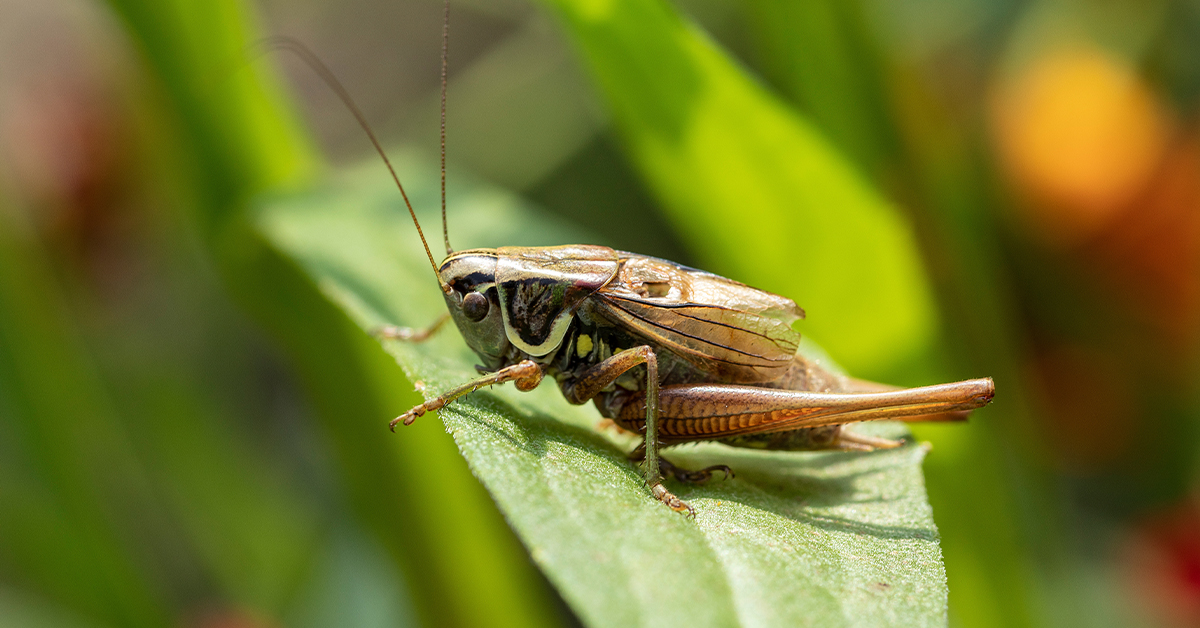In some countries, crickets are considered good luck. Because of their ability to reproduce prolifically, they are a symbol of abundance and prosperity. In these cultures, finding a cricket in your home is an auspicious sign, thought to be a harbinger of good fortune.
In most of the United States though, these chirping orthopterans are just another annoying and destructive pest. This is especially true in autumn, when crickets (like other bugs) find their way into your home while seeking a comfortable place to spend the winter.
Are Crickets Bad for Your House?
While crickets are rarely harmful to people or pets, they can damage your home and belongings. Crickets consume many forms of organic matter and will eat wood, paper, houseplants, leather, fur, and natural textiles like cotton, silk, and wool. If you find crickets in your home, check to be sure they aren’t feasting on your books, stored papers, clothes, or plants.
What Type of Cricket Do I Have?
Long Island is home to three types of crickets: cave crickets, field crickets, and house crickets. It may be difficult to tell these crickets apart, so here’s a helpful cricket identification guide.
- Cave crickets, also known as camel crickets, are the least likely to enter your home. When they do, they gravitate toward dark, damp spaces, like your basement or corners of your garage. Cave crickets have a distinctive humped shape, and they are light to dark brown with darker striped bands. They are approximately ½” to 1½” in length, with long hind legs that allow them to jump several feet. They are wingless, so they do not chirp.
- Field crickets live in outdoor grassy spaces, but they can find their way into your home, taking refuge in closets, crawl spaces, and under cupboards. They are black in color, and measure ½” to 1” long, with antennae that are longer than their bodies. Field crickets are nocturnal, and males use their wings to attract mates with chirping noises.
- House crickets are the smallest of Long Island’s crickets and are most frequently found indoors – hiding in closets, crawl spaces, and cupboards like their field cricket cousins. They are yellowish-brown in color, measuring ¾” to ⅞” long. Like field crickets, the winged males chirp to attract females… typically at night. This is the type of cricket you are most likely to encounter in your home.
Do House Crickets Bite?
While crickets technically are able to bite, they are unlikely to do so. Even if they tried, their jaws aren’t strong enough to pierce human or animal skin. You should be more concerned about the damage they can do, as well as with exposure to their feces and bodily fluids. These can carry pathogens like salmonella or E. coli.
What Attracts Crickets to a House?
Like other pests that find their way into your home in the fall, crickets are seeking warmth, food, and water. To reduce the likelihood of attracting crickets, take away their access to these things.
What Makes Crickets Go Away?
Crickets are hardy pests that are tough to eliminate once they have invaded your home. They reproduce rapidly and start damaging your property immediately… not to mention what their nocturnal chirping can do to your sleep cycle and mental state. When it comes to crickets, the proverbial ounce of prevention is worth a pound of cure.
Prevent crickets from coming indoors by sealing any cracks or gaps. Clear your yard of leaves and debris so they can’t take cover on their way toward your home. Also consider changing your exterior lighting to yellow-tinted or sodium vapor bulbs. Crickets find this much less attractive than clear, white light.
Inside, don’t allow standing water to accumulate and clean up any spilled food on floors or counters. Don’t leave food sitting out – including pet food. Because crickets also eat paper and fabric, keep your house tidy and clear any piles of paper or dirty laundry.
If you have taken these steps and crickets still find their way into your home, it may be time to call a professional exterminator.
Twin Forks Pest Control® Eliminates Autumnal Pests
Twin Forks Pest Control® has more than 25 years of autumnal pest removal. Our trained professionals can give you peace of mind (and a better night’s sleep) by eliminating crickets in your home. Call us today for a free estimate.

